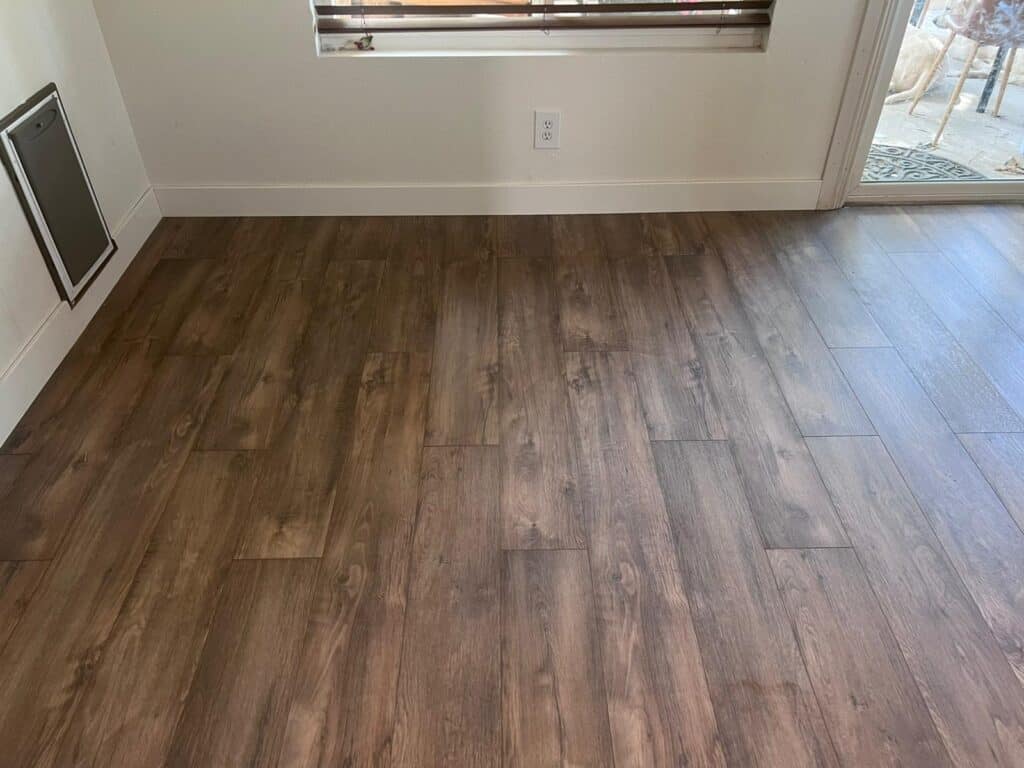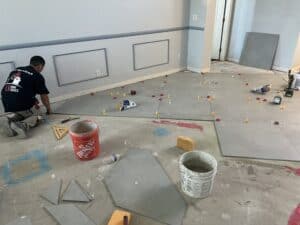Are you considering giving your home a makeover with new flooring? Laminate flooring has become a popular choice for homeowners due to its durability, affordability, and ease of installation. However, one question that often arises is whether it’s cheaper to install laminate flooring yourself or hire a professional installer. In this article, we’ll explore the costs associated with DIY laminate flooring installation versus hiring a professional, along with the benefits and challenges of each option.
About Laminate Flooring
Laminate flooring is a synthetic flooring product made to resemble hardwood, tile, or stone. It typically consists of multiple layers, including a decorative layer, a core layer for stability, and a protective top layer. Laminate flooring is known for its durability, resistance to scratches and moisture, and easy maintenance, making it an attractive option for homeowners seeking the look of hardwood or tile without the high cost and maintenance requirements.
The Cost of Laminate Flooring
Before diving into the cost of installation, it’s essential to understand the cost of the laminate flooring itself. Laminate flooring prices vary depending on factors such as quality, thickness, design, and brand. On average, laminate flooring can cost anywhere from $1 to $5 per square foot, with premium options reaching $8 per square foot or more.
When purchasing laminate flooring, it’s crucial to consider factors such as warranty, durability, and aesthetic appeal to ensure you’re getting the best value for your investment.
DIY Laminate Flooring Installation
Cost Savings
One of the primary reasons homeowners opt for DIY laminate flooring installation is the potential for cost savings. By installing the flooring yourself, you can eliminate labor costs, which can account for a significant portion of the total project expenses when hiring a professional installer.
DIY Laminate Flooring
Challenges
While DIY installation can save you money upfront, it’s essential to consider the potential challenges involved. Installing laminate flooring requires precision and attention to detail to ensure a seamless finish. Some common challenges associated with DIY installation include:
- Subfloor Preparation: Proper subfloor preparation is crucial for a successful laminate flooring installation. This may involve removing existing flooring, leveling the subfloor, and addressing any moisture issues.
- Accurate Measurements: Achieving accurate measurements and cuts is essential to minimize waste and ensure a proper fit.
- Underlayment Installation: Installing the underlayment beneath the laminate planks helps provide cushioning, moisture protection, and sound absorption. Proper installation of the underlayment is critical for the longevity of the flooring.
- Plank Alignment: Ensuring uniform plank alignment and tight seams is essential for a professional-looking finish.
- Trimming and Finishing: Cutting and installing trim pieces around doorways, walls, and transitions requires precision and attention to detail.
Hiring a Professional Installer
Convenience and Expertise
Hiring a professional installer for your laminate flooring project offers several benefits, including convenience and expertise. Professional installers have the knowledge, experience, and tools necessary to complete the job efficiently and effectively. They can also provide valuable advice on selecting the right laminate flooring for your needs and ensuring proper installation.
Professional Installer
Cost Considerations
While hiring a professional installer may involve additional expenses compared to DIY installation, it’s essential to consider the overall value they bring to the project. Professional installers can help prevent costly mistakes, ensure proper installation techniques, and provide peace of mind knowing the job will be done right the first time.
Warranty Coverage
Many laminate flooring manufacturers offer warranties that may be contingent on professional installation. By hiring a professional installer, you can ensure that your flooring is installed according to manufacturer specifications, thereby preserving your warranty coverage and providing added protection for your investment.
Conclusion
In conclusion, whether it’s cheaper to install laminate flooring yourself or hire a professional installer depends on various factors, including your budget, skill level, and project requirements. While DIY installation can offer cost savings, it requires time, effort, and attention to detail to achieve professional results. On the other hand, hiring a professional installer provides convenience, expertise, and peace of mind, albeit at a higher cost. Ultimately, the decision boils down to weighing the pros and cons of each option and determining which approach best suits your needs and preferences. Whether you choose to tackle the installation yourself or enlist the help of a professional, laminate flooring can enhance the beauty and value of your home for years to come.
Q: Is it cheaper to install laminate flooring yourself or hire a professional?
A: The cost comparison between DIY installation and hiring a professional installer depends on various factors such as your skill level, the complexity of the project, and your budget. While DIY installation may save you money on labor costs, it requires time, effort, and attention to detail. Hiring a professional installer offers convenience and expertise but comes with additional expenses. Ultimately, consider your priorities and weigh the pros and cons of each option to make the best decision for your needs.
Q: What are the benefits of DIY laminate flooring installation?
A: DIY laminate flooring installation can offer cost savings by eliminating labor costs associated with hiring a professional installer. It also provides a sense of accomplishment and allows you to work at your own pace. Additionally, DIY projects offer the flexibility to customize the installation process to your preferences and schedule.
Q: What challenges are involved in DIY laminate flooring installation?
A: DIY laminate flooring installation requires precision and attention to detail to achieve professional results. Some common challenges include proper subfloor preparation, accurate measurements and cuts, installation of underlayment, achieving uniform plank alignment, and trimming and finishing. Overcoming these challenges may require research, practice, and patience.
Q: Why should I consider hiring a professional installer for laminate flooring?
A: Hiring a professional installer for laminate flooring offers several benefits, including convenience, expertise, and peace of mind. Professional installers have the knowledge, experience, and tools necessary to complete the job efficiently and effectively. They can also advise on selecting the right flooring and ensure proper installation techniques. Additionally, professional installation may be required to maintain warranty coverage from the manufacturer.
Q: How do I decide whether to install laminate flooring myself or hire a professional?
A: When deciding between DIY installation and hiring a professional, consider factors such as your skill level, available time and resources, the complexity of the project, and your budget. Evaluate the pros and cons of each option and determine which approach best suits your needs and preferences. If you’re confident in your abilities and willing to invest the time and effort, DIY installation may be a cost-effective option. However, if you prefer convenience and expertise, hiring a professional installer may be the better choice.
Q: What are the warranty implications of DIY laminate flooring installation?
A: Many laminate flooring manufacturers offer warranties that may be contingent on professional installation. By hiring a professional installer, you can ensure that your flooring is installed according to manufacturer specifications, thereby preserving your warranty coverage. If you choose to install the flooring yourself, carefully review the manufacturer’s warranty terms and consider whether DIY installation may affect your warranty coverage.

